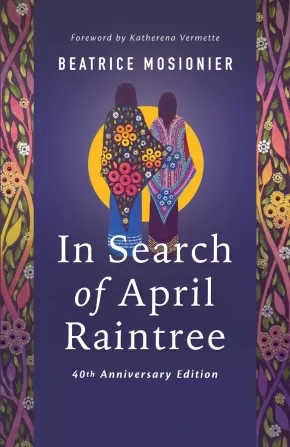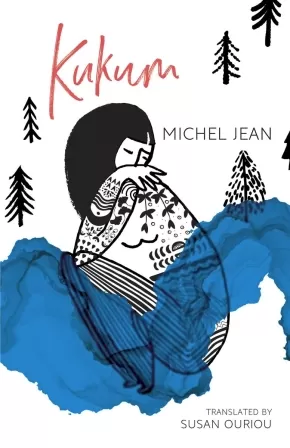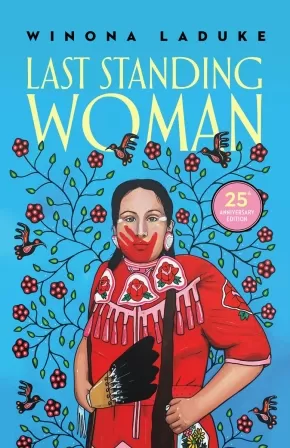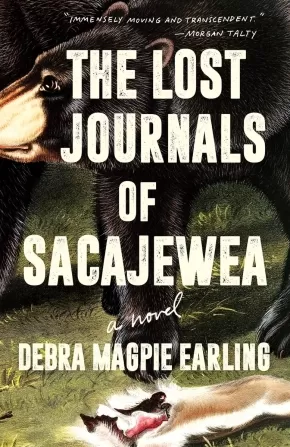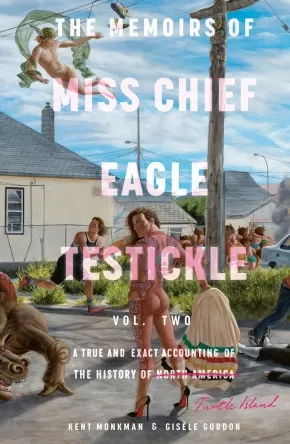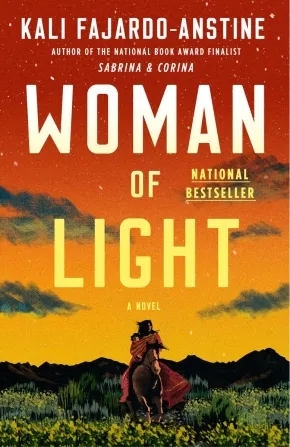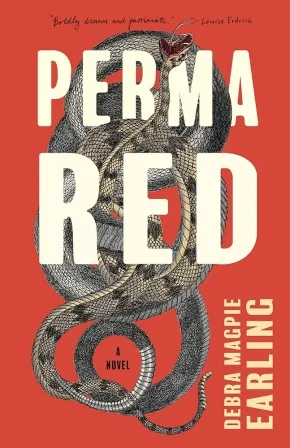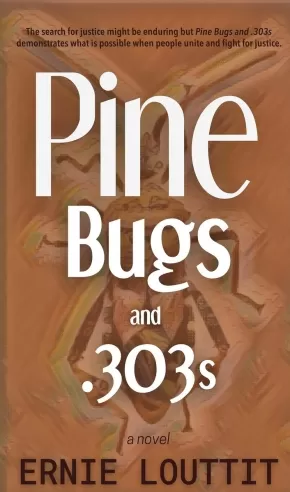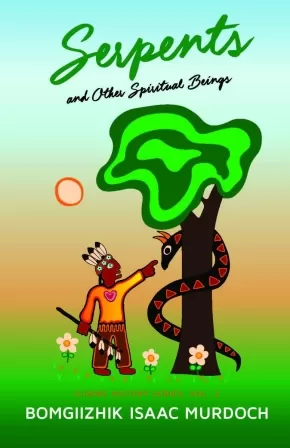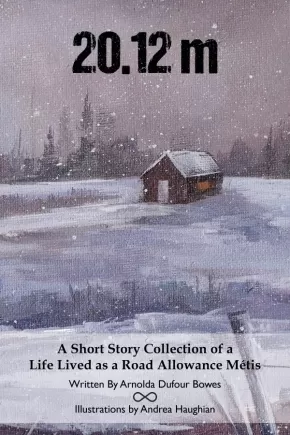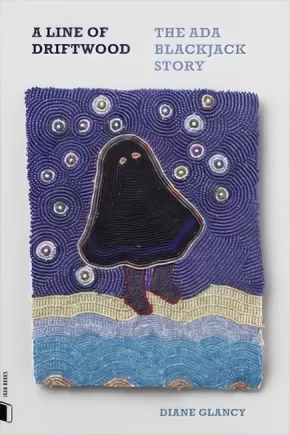
Historical Fiction
16
-
30
of
51 Results;
Sort By
Go To
of 4
Earthdivers, Vol. 1: Kill Columbus
$23.99
Artists:
Format:
Paperback
Text Content Territories:
Indigenous American; Native American;
ISBN / Barcode: 9798887240459
Synopsis:
Synopsis:
The New York Times–bestselling author of The Only Good Indians and My Heart Is a Chainsaw makes his comics debut with this time-hopping horror thriller about far-future Indigenous outcasts on a mission to kill Christopher Columbus.
The year is 2112, and it’s the apocalypse exactly as expected: rivers receding, oceans rising, civilization crumbling. Humanity has given up hope, except for a group of Indigenous outcasts who have discovered a time travel portal in a cave in the desert and figured out where everything took a turn for the worst: America.
Convinced that the only way to save the world is to rewrite its past, they send one of their own—a reluctant linguist named Tad—on a bloody, one-way mission to 1492 to kill Christopher Columbus before he reaches the so-called New World. But there are steep costs to disrupting the timeline, and taking down an icon isn’t an easy task for an academic with no tactical training and only a wavering moral compass to guide him. As the horror of the task ahead unfolds and Tad’s commitment is tested, his actions could trigger a devastating new fate for his friends and the future.
Join Stephen Graham Jones and artist Davide Gianfelice for Earthdivers, Vol. 1 (collecting Earthdivers issues #1-6), the beginning of an unforgettable ongoing sci-fi slasher spanning centuries of America’s Colonial past to explore the staggering forces of history and the individual choices we make to survive it.
Reviews
"Earthdivers is why I read comics–a timely concept told boldly; a strong debut by Stephen Graham Jones who proves a voice to watch with something to say; and career work by Davide Gianfelice, a veteran artist who was already light years ahead of his peers." –Pornsak Pichetshote, author of The Good Asian
“A time-twisting trip you don't want to miss! Myths, mayhem and history-altering murders ahoy!” –Cavan Scott, author of Dead Seas
“Earthdivers feels fresh, compelling, and bold…It’s a comic that stands head and shoulders apart from the rest of the pack on the shelves. Don’t wait for the trade – this is an urgent comic that begs to be read.” –Comic Watch
“Stephen Graham Jones enters the comics scene with a dense but fascinating and well-paced comic with a tasty dash of political commentary, as every great science fiction story should have. The visuals from Davide Gianfelice and Joana Lafuente are well-directed and stunningly detailed, making for a wholly immersive reading experience.” –Monkeys Fighting Robots
Series Information
This is the first book in the Earthdivers series.
Additional Information
176 pages | 6.69" x 10.19" | Paperback
In Search of April Raintree: 40th Anniversary Edition
$22.95
Format:
Paperback
Text Content Territories:
Indigenous Canadian; Métis;
Reading Level: N/A
ISBN / Barcode: 9781774920916
Synopsis:
Synopsis:
Memories. Some memories are elusive, fleeting, like a butterfly that touches down and is free until it is caught. Others are haunting. You'd rather forget them, but they won't be forgotten. And some are always there. No matter where you are, they are there, too.
In this moving story of legacy and reclamation, two young sisters are taken from their home and family. Powerless in a broken system, April and Cheryl are separated and placed in different foster homes. Despite the distance, they remain close, even as their decisions threaten to divide them emotionally, culturally, and geographically. As one sister embraces her Métis identity, the other tries to leave it behind.
Will the sisters’ bond survive as they struggle to make their way in a society that is often indifferent, hostile, and violent?
Beloved for more than 40 years, In Search of April Raintree is a timeless story that lingers long after the final page. This anniversary edition features a foreword by Governor General’s Award–winning author Katherena Vermette, and an afterword by University of Regina professor, Dr. Raven Sinclair (Ôtiskewâpit), an expert on Indigenous child welfare.
Educator Information
This 40th anniversary edition features a foreword by Governor General’s Award–winning author Katherena Vermette, and an afterword by University of Regina professor, Dr. Raven Sinclair (Ôtiskewâpit), an expert on Indigenous child welfare.
A critical edition of this work, which includes ten critical essays accompanying the text, is available here: In Search of April Raintree: Critical Edition
A version written specifically for students in grades 9-12 that does not contain the graphic scene that is contained in this original version is available here: April Raintree
Find a teacher guide for In Search of April Raintree and April Raintree here: Teacher Guide for In Search of April Raintree and April Raintree: A Trauma-Informed Approach to Teaching Stories of Indigenous Survivance, Family Separation, and the Child Welfare System
Additional Information
343 pages | 5.50" x 8.50" | Paperback | Critical Edition
JAJ: A Haida Manga
$34.95
Artists:
Format:
Hardcover
Text Content Territories:
Indigenous Canadian; First Nations; Haida;
Reading Level: N/A
ISBN / Barcode: 9781771623537
Synopsis:
Synopsis:
With gorgeous imagery, visual artist Michael Nicoll Yahgulanaas brings to life the tumultuous history of first contact between Europeans and Indigenous peoples and the early colonization by the Europeans of the northern West Coast.
Yahgulanaas uses a blend of traditional and modern art, eschewing the traditional boxes of comic books for the flowing shapes of North Pacific iconography. The panels are filled with colourful and expressive watercolour paintings. The panels of each page, if removed and assembled into one whole image, form a large image reminiscent of a woven robe.
The story follows several historical figures, including Johan Adrian Jacobsen (JAJ), who comes to the Haida village of Masset to collect specimens for a German museum, through a time span that includes first contact, the devastation of the smallpox epidemic, and the mass resettlement of disenfranchised peoples, both Indigenous and European.
Reviews
“This book is a necessary tale told by the perfect voice at the right time. It also uses graphic imagery in a way I've not seen before, and it feels ground-breaking.” — Douglas Coupland
Additional Information
132 pages | 8.00" x 10.00" | Hardcover
Kukum
$22.99
Format:
Paperback
Text Content Territories:
Indigenous Canadian; First Nations; Innu (Montagnais-Naskapi); Mashteuiatsh (Pekuakamiulnuatsh);
Reading Level: N/A
ISBN / Barcode: 9781487010904
Synopsis:
Synopsis:
A Quebec bestseller based on the life of Michel Jean's great-grandmother that delivers an empathetic portrait of drastic change in an Innu community.
Kukum recounts the story of Almanda Siméon, an orphan raised by her aunt and uncle, who falls in love with a young Innu man despite their cultural differences and goes on to share her life with the Pekuakami Innu community. They accept her as one of their own: Almanda learns their language, how to live a nomadic existence, and begins to break down the barriers imposed on Indigenous women. Unfolding over the course of a century, the novel details the end of traditional ways of life for the Innu, as Almanda and her family face the loss of their land and confinement to reserves, and the enduring violence of residential schools.
Kukum intimately expresses the importance of Innu ancestral values and the need for freedom nomadic peoples feel to this day.
Educator Information
Translated by Susan Ouriou.
Additional Information
224 pages | 5.50" x 8.50" | Paperback
Last Standing Woman
$23.95
Format:
Paperback
Text Content Territories:
Indigenous American; Native American; Anishinaabeg; Ojibwe (Chippewa); Minnesota Chippewa Tribe; White Earth Band of Ojibwe;
Reading Level: N/A
ISBN / Barcode: 9781774920527
Synopsis:
Synopsis:
Hopeful, irreverent, and deeply moving, Winona LaDuke’s Last Standing Woman chronicles the stories and struggles of an Anishinaabe community across seven generations.
Born at the turn of the 21st century, The Storyteller, also known as Ishkwegaabawiikwe (Last Standing Woman), carries her people’s past within her memories. The White Earth Anishinaabe people have lived on the same land since time immemorial. Among the towering white pines and rolling hills, each generation is born, lives out their lives, and is buried.
The arrival of European missionaries changes the community forever. Piece by piece, government policies rob the people of their land. Missionaries and Indian agents work to outlaw ceremonies the Anishinaabeg have practised for centuries. Grave-robbing anthropologists dig up ancestors and whisk them away to museums as artifacts. Logging operations destroy traditional sources of food, pushing the White Earth people to the brink of starvation.
Battling addiction, violence, and corruption, each member of White Earth must find their own path of resistance as they struggle to reclaim stewardship of their land, bring their ancestors home, and stay connected to their culture and to each other.
In this highly anticipated 25th anniversary edition of her debut novel, Winona LaDuke weaves a nonlinear narrative of struggle and triumph, resistance and resilience, spanning seven generations from the 1800s to the early 2000s.
Reviews
"Humor and compassion are ever present, and at its best, Last Standing Woman is a dignified and powerful retelling of one reservation's struggle for survival."— Booklist, quote from review of previous edition
"Rooted in LaDuke's own Anishinaabe heritage, the novel skillfully intertwines social history, oral myth and character study in ways reminiscent of Leslie Marmon Silko and Louise Erdrich." — Publishers Weekly, quote from review of previous edition
"LaDuke's characters are as vital and fully realized as any in a Louise Erdrich novel...Recommended for both public and academic libraries." — Library Journal, quote from review of previous edition
"The Anishinaabe culture leaps off the page and you can practically smell the fry bread cooking on the stove and hear the drums beating in the distance."— Book Snob, quote from review of previous edition
Additional Information
360 pages | 5.50" x 8.50" | Paperback | 25th Anniversary Edition
The Lost Journals of Sacajewea: A Novel (HC) (1 in Stock)
$39.95
Format:
Hardcover
Text Content Territories:
Indigenous American; Native American; Shoshone;
Reading Level: N/A
ISBN / Barcode: 9781571311450
Synopsis:
Synopsis:
“In my seventh winter, when my head only reached my Appe’s rib, a White Man came into camp. Bare trees scratched sky. Cold was endless. He moved through trees like strikes of sunlight. My Bia said he came with bad intentions, like a Water Baby’s cry.”
Among the most memorialized women in American history, Sacajewea served as interpreter and guide for Lewis and Clark’s Corps of Discovery. In this visionary novel, acclaimed Indigenous author Debra Magpie Earling brings this mythologized figure vividly to life, casting unsparing light on the men who brutalized her and recentering Sacajewea as the arbiter of her own history.
Raised among the Lemhi Shoshone, in this telling the young Sacajewea is bright and bold, growing strong from the hard work of “learning all ways to survive”: gathering berries, water, roots, and wood; butchering buffalo, antelope, and deer; catching salmon and snaring rabbits; weaving baskets and listening to the stories of her elders. When her village is raided and her beloved Appe and Bia are killed, Sacajewea is kidnapped and then gambled away to Charbonneau, a French Canadian trapper.
Heavy with grief, Sacajewea learns how to survive at the edge of a strange new world teeming with fur trappers and traders. When Lewis and Clark’s expedition party arrives, Sacajewea knows she must cross a vast and brutal terrain with her newborn son, the white man who owns her, and a company of men who wish to conquer and commodify the world she loves.
Written in lyrical, dreamlike prose, The Lost Journals of Sacajewea is an astonishing work of art and a powerful tale of perseverance—the Indigenous woman’s story that hasn’t been told.
Reviews
“[In The Lost Journals of Sacajewea] the suffering—and bold, ingenious agency—of women held as captives by both Native and Euro-Americans is rendered with special vividness [. . .] The narration is rich in realistic detail but animated by a dreamlike intensity [. . .] Throughout the text, Sacajewea memorably enacts what Gerald Vizenor dubs survivance, the negotiation of existential challenges with a spirited, oppositional inventiveness. A profoundly moving imagining of the impressions and contributions of a major historical figure."—Kirkus Reviews, starred review
"Earling adds a much-needed Native woman’s perspective to Sacajewea’s story, bringing a note of resilience to her unflinching account of the white men’s violence and depredation: 'Women do not become their Enemy captors. We survive them.' This is a beautiful reclamation."—Publishers Weekly
[The Lost Journals of Sacajewea] offers new perspective on what is known, and debated, about the life of Sacajewea, including her age, her marriage to a French fur-trader (Toussaint Charbonneau), and her experience as the only woman traveling on the 1804-1806 Corp of Discovery expedition with Meriwether Lewis and William Clark. In poetic prose, Earling interweaves factual accounts of Sacajewea’s life with a first-person narrative deeply rooted in the physicality of landscape and brutality of the times”—Jessica Gigot, Seattle Times
“[The Lost Journals of Sacajewea is] an impressionistic, poetic account, one that vividly renders external hardships and internal thoughts, giving equal weight to each. [. . .] it delivers a uniquely thorough perspective on the mind of a particular young woman, both ordinary and extraordinary. In this way, we come to understand Sacajewea more deeply—certainly more than we understand the men of famous names like Lewis and Clark. lt’s a book to enjoy like a river: you give yourself over to it and follow where it takes you.”—Greer Macallister, Chicago Review of Books
Additional Information
264 pages | 5.50" x 8.50"
The Memoirs of Miss Chief Eagle Testickle: Vol. 2: A True and Exact Accounting of the History of Turtle Island (HC) (3 in Stock)
$44.00
Format:
Hardcover
Text Content Territories:
Indigenous Canadian; First Nations; Cree (Nehiyawak);
Reading Level: N/A
ISBN / Barcode: 9780771006470
Synopsis:
Synopsis:
From global art superstar Kent Monkman and his longtime collaborator Gisèle Gordon, a transformational work of true stories and imagined history that will remake readers' understanding of the land called North America.
For decades, the singular and provocative paintings by Cree artist Kent Monkman have featured a recurring character—an alter ego of sorts, a shape-shifting, time-travelling elemental being named Miss Chief Eagle Testickle. Though we have glimpsed her across the years, and on countless canvases, it is finally time to hear her story, in her own words. And, in doing so, to hear the whole history of Turtle Island anew. The Memoirs of Miss Chief Eagle Testickle: A True and Exact Accounting of the History of Turtle Island is a genre-demolishing work of genius, the imagined history of a legendary figure through which a profound truths emerge—a deeply Cree and gloriously queer understanding of our shared world, its past, its present, and its possibilities.
Volume Two, which takes us from the moment of confederation to the present day, is a heartbreaking and intimate examination of the tragedies of the nineteenth and twentieth century. Zeroing in on the story of one family told across generations, Miss Chief bears witness to the genocidal forces and structures that dispossessed and attempted to erase Indigenous peoples. Featuring many figures pulled from history as well as new individuals created for this story, Volume Two explores the legacy of colonial violence in the children’s work camps (called residential schools by some), the Sixties Scoop, and the urban disconnection of contemporary life. Ultimately, it is a story of resilience and reconnection, and charts the beginnings of an Indigenous future that is deeply rooted in an experience of Indigenous history—a perspective Miss Chief, a millennia-old legendary being, can offer like none other.
Blending history, fiction, and memoir in bold new ways, The Memoirs of Miss Chief Eagle Testickle are unlike anything published before. And in their power to reshape our shared understanding, they promise to change the way we see everything that lies ahead.
Additional Information
264 pages | 6.79" x 10.26" | Hardcover
Woman of Light: A Novel
$24.95
Format:
Paperback
Text Content Territories:
Indigenous American; Native American;
Reading Level: N/A
ISBN / Barcode: 9780525511335
Synopsis:
Synopsis:
There is one every generation, a seer who keeps the stories.
Luz “Little Light” Lopez, a tea leaf reader and laundress, is left to fend for herself after her older brother, Diego, a snake charmer and factory worker, is run out of town by a violent white mob. As Luz navigates 1930s Denver, she begins to have visions that transport her to her Indigenous homeland in the nearby Lost Territory. Luz recollects her ancestors’ origins, how her family flourished, and how they were threatened. She bears witness to the sinister forces that have devastated her people and their homelands for generations. In the end, it is up to Luz to save her family stories from disappearing into oblivion.
Written in Kali Fajardo-Anstine’s singular voice, the wildly entertaining and complex lives of the Lopez family fill the pages of this multigenerational western saga. Woman of Light is a transfixing novel about survival, family secrets, and love—filled with an unforgettable cast of characters, all of whom are just as special, memorable, and complicated as our beloved heroine, Luz.
Additional Information
352 pages | 5.17" x 7.96" | Paperback
Daughters of the Deer
$24.00
Format:
Paperback
Text Content Territories:
Indigenous Canadian; First Nations; Anishinaabeg; Algonquin; Haudenosaunee (Iroquois);
Reading Level: N/A
ISBN / Barcode: 9780735282087
Synopsis:
Synopsis:
In this haunting and groundbreaking historical novel, Danielle Daniel imagines the lives of women in the Algonquin territories of the 1600s, a story inspired by her family’s ancestral link to a young girl who was murdered by French settlers.
1657. Marie, a gifted healer of the Deer Clan, does not want to marry the green-eyed soldier from France who has asked for her hand. But her people are threatened by disease and starvation and need help against the Iroquois and their English allies if they are to survive. When her chief begs her to accept the white man’s proposal, she cannot refuse him, and sheds her deerskin tunic for a borrowed blue wedding dress to become Pierre’s bride.
1675. Jeanne, Marie’s oldest child, is seventeen, neither white nor Algonquin, caught between worlds. Caught by her own desires, too. Her heart belongs to a girl named Josephine, but soon her father will have to find her a husband or be forced to pay a hefty fine to the French crown. Among her mother’s people, Jeanne would have been considered blessed, her two-spirited nature a sign of special wisdom. To the settlers of New France, and even to her own father, Jeanne is unnatural, sinful—a woman to be shunned, beaten, and much worse.
With the poignant, unforgettable story of Marie and Jeanne, Danielle Daniel reaches back through the centuries to touch the very origin of the long history of violence against Indigenous women and the deliberate, equally violent disruption of First Nations cultures.
Reviews
“Danielle Daniel renders the stories of her ancestors vividly, poetically and with deep love and respect. Daughters of the Deer gives long overdue voices to the Indigenous women who came before. A subtle, moving demonstration of how colonization attempted to strip Indigenous women of their power and place, and a testament to the enduring strength and wisdom that no colonial power could extinguish.” —Jessica McDiarmid, author of Highway of Tears: A True Story of Racism, Indifference and the Pursuit of Justice for Missing and Murdered Indigenous Women and Girls
Additional Information
344 pages | 5.25" x 8.00" | Paperback
Perma Red
$25.50
Format:
Paperback
Text Content Territories:
Indigenous American; Native American; Salish; Interior Salish; Bitterroot Salish;
Reading Level: N/A
ISBN / Barcode: 9781571311467
Synopsis:
Synopsis:
Bold, passionate, and more urgent than ever, Debra Magpie Earling’s powerful classic novel is reborn in this new edition.
On the Flathead Indian Reservation, summer is ending, and Louise White Elk is determined to forge her own path. Raised by her Grandmother Magpie after the death of her mother, Louise and her younger sister have grown up into the harsh social and physical landscape of western Montana in the 1940s, where Native people endure boarding schools and life far from home. As she approaches adulthood, Louise hopes to create an independent life for herself and an improved future for her family—but three persistent men have other plans.
Since childhood, Louise has been pursued by Baptiste Yellow Knife, feared not only for his rough-and-tumble ways, but also for the preternatural gifts of his bloodline. Baptiste’s rival is his cousin, Charlie Kicking Woman: a man caught between worlds, torn between his duty as a tribal officer and his fascination with Louise. And then there is Harvey Stoner. The white real estate mogul can offer Louise her wildest dreams of freedom, but at what cost?
As tensions mount, Louise finds herself trying to outrun the bitter clutches of winter and the will of powerful men, facing choices that will alter her life—and end another’s—forever.
Reviews
“Perma Red has no equal. You will be mesmerized by the poetically intimate prose, the realistically graphic details of life on a Montana Indian reservation, and the humor, love and pain you’ll experience through these richly drawn, honest characters. As another of Montana’s greatest writers, James Welch, put it: Perma Red ‘borders on mythic . . . a wonder-filled gift to all.’”—Mark Gibbons, NPR
Additional Information
368 pages | 5.50" x 8.50" | Paperback
Pine Bugs and .303s
$22.95
Format:
Paperback
Text Content Territories:
Indigenous Canadian; First Nations; Cree (Nehiyawak);
Reading Level: N/A
ISBN / Barcode: 9781988989518
Synopsis:
Synopsis:
Pine Bugs and .303s is the story of two families in Northwestern Ontario. Elmer Wabason, a Cree man and Gilbert Bertrand, a white man grew up three miles apart. Until World War II they had never met. The town and the reserve are separated by the newly named Trans-Canada Highway. A fast-paced story uncovering the bond of soldiers, the strength of women, the impact of racism and resilience. The families endure disaster, deceit and corruption. They achieve many firsts even though the odds seem stacked against them at almost every turn. The search for justice takes them to a pivotal trial in 1965.
Reviews
"Louttit’s taut narrative, and plot twists, masterfully build outrage and tension for the reader—like a .303 in the hands of a nefarious foe, or a pine bug crawling up one’s neck. A great read you won’t want to put down." - David Giuliano, author of The Undertaking of Billy Buffone
Additional Information
322 pages | 5.00" x 8.50" | Paperback
Serpents and Other Spiritual Beings
$25.00
Format:
Paperback
Text Content Territories:
Indigenous Canadian; First Nations; Anishinaabeg; Ojibway;
Reading Level: N/A
ISBN / Barcode: 9781928120353
Synopsis:
Synopsis:
Serpents and Other Spiritual Beings is the second book in a series by renowned Ojibwe storyteller Bomgiizhik Isaac Murdoch, following on The Trail of Nenaboozhoo and Other Creation Stories (2019). Serpents and Other Spiritual Beings is a collection of traditional Ojibwe/Anishinaabe stories transliterated directly from Murdoch's oral storytelling. Part history, legend, and mythology, these are stories of tradition, magic and transformation, morality and object lessons, involving powerful spirit-beings in serpent form. The stories appear in both English and Anishinaabemowin, with translations by Patricia BigGeorge. Murdoch's traditional-style Ojibwe artwork provides beautiful illustrations throughout.
Reviews
"'When the Thunderbirds and Serpents fight, they feed off each other, you know great medicine gets cast across the land. We get our life from that.' So writes storyteller Isaac Murdoch as he shares his Elders' stories about tunnels beneath the earth, rich laws, philosophies, teachings, power from up there, down there, and all around us, until we too hear the thunders as they bring us into the world of wahkotowin, all our relations. How privileged and blessed we are to be able to read the Ahtyokaywina of our people."--Maria Campbell, author of Halfbreed
"Gather around, for here are oral stories transcribed so they retain the flavour of a narrative spoken aloud, and translated into Anishinaabemowin; perfect for language-learners. I love the way these stories infuse the spirit world into an every-day context, these are not dusty old legends, but a living way of seeing the world around us in the here and now."--Nathan Niigan Noodin Adler, author of Ghost Lake
Educator & Series Information
Dual-Language: English and Anishinaabemowin.
Anishinaabemowin translation by Patricia BigGeorge, who is an Anishinaabemowin speaker and translator.
This book is Vol. 2 in the Ojibwe History Series.
Additional Information
100 pages | 5.50" x 8.50" | 20 illustrations | Paperback
This House Is Not a Home
$24.00
Format:
Paperback
Text Content Territories:
Indigenous Canadian; First Nations; Dene;
Reading Level: N/A
ISBN / Barcode: 9781773635620
Synopsis:
Synopsis:
After a hunting trip one fall, a family in the far reaches of so-called Canada’s north return to nothing but an empty space where their home once stood. Finding themselves suddenly homeless, they have no choice but to assimilate into settler-colonial society in a mining town that has encroached on their freedom.
An intergenerational coming-of-age novel, This House Is Not a Home follows Kǫ̀, a Dene man who grew up entirely on the land before being taken to residential school. When he finally returns home, he struggles to connect with his family: his younger brother whom he has never met, his mother because he has lost his language, and an absent father whose disappearance he is too afraid to question.
The third book from acclaimed Dene, Cree and Metis writer Katłįà, This House Is Not a Home is a fictional story based on true events. Visceral and embodied, heartbreaking and spirited, this book presents a clear trajectory of how settlers dispossessed Indigenous Peoples of their land — and how Indigenous communities, with dignity and resilience, continue to live and honour their culture, values, inherent knowledge systems, and Indigenous rights towards re-establishing sovereignty. Fierce and unflinching, this story is a call for land back.
Reviews
"Absolutely exquisite. Told with such love and gentle ferocity, I’m convinced This House Is Not A Home will never leave those who read it. I am in awe of what I’ve witnessed here. Mahsi cho, Katlia. Bravo! " — Richard Van Camp author of The Lesser Blessed and Moccasin Square Gardens
Additional Information
192 pages | 5.50" x 8.50" | Paperback
20.12m: A Short Story Collection of a Life Lived as a Road Allowance Métis
$20.00
Artists:
Format:
Paperback
Text Content Territories:
Indigenous Canadian; Métis;
ISBN / Barcode: 978-1-926795-99-7
Synopsis:
Synopsis:
20.12m: A Short Story Collection of a Life Lived as a Road Allowance Métis celebrates and acknowledges the humble living conditions of Métis Road Allowance families and it exemplifies their grit and tenacity to survive and indeed succeed in the face of so many hardships. “20.12m” refers to the narrow width of many of the road allowances throughout the prairies. This unoccupied crown land became one of the meagre options for many impoverished Métis families as so few owned land.
In this passionate coming of age book, Arnolda Dufour Bowes honours the true-life experiences of her father, Arnold Charles Dufour, a resident of the Punnichy, Saskatchewan Road Allowance community. The strength of the oral tradition has kept these stories solidly in place in Arnolda’s memory. Weaving true elements with those drawn from her own creativity, these five engaging stories share a lived experience that is little-known to most Canadians. This collection of cherished remembrances of this Métis family will also strongly resonate with many other Métis families who lived similar lives. In keeping with the family focus, Arnolda’s sister, Andrea Haughian, skillfully complements these poignant stories with expressive illustrations, which both honour and richly portray road allowance life.
Educator Information
Recommended by publisher for secondary, post-secondary, and adult readers.
Additional Information
Paperback
A Line of Driftwood: The Ada Blackjack Story
$24.50
Format:
Paperback
Text Content Territories:
Indigenous American; Alaska Native; Inupiat;
Reading Level: N/A
ISBN / Barcode: 9781933527215
Synopsis:
Synopsis:
In September 1921, a young Inupiat woman named Ada Blackjack traveled to Wrangel Island, 200 miles off the Arctic Coast of Siberia, as a cook and seamstress, along with four professional explorers. The expedition did not go as planned. When a rescue ship finally broke through the ice two years later, she was the only survivor.
Diane Glancy discovered Blackjack’s diary in the Dartmouth archives and created a new narrative based on the historical record and her vision of this woman’s extraordinary life. She tells the story of a woman facing danger, loss, and unimaginable hardship, yet surviving against the odds where four “experts” could not. Beyond the expedition, the story examines Blackjack’s childhood experiences at an Indian residential school, her struggles as a mother and wife, and the faith that enabled her to survive alone on a remote island in the Arctic Sea.
Glancy’s creative telling of this heroic tale is a high mark in her award-winning hybrid investigations of suffering, identity, and Native American history.
Reviews
“This is not a reconstruction; it is symbiosis as an act of respect and dignity. As Diane Glancy 'ventriloquizes' Ada into a truth of words—written, typed, spoken, thought—she speaks the paradoxical truth of acts of writing as self-witness: 'I am hurting when I am writing.’ Isolation becomes revelation. The spiritual driftwood becomes a testament of sacred connection and a claiming back of voice.”—John Kinsella
“The shifting of ice. Written letters become elk, an orange is a moon, an owl is a blank page, and the stunning survival in this Arctic landscape redefines the question, “What is rescue?” Diane Glancy hears the spirits, the words beneath the words. She knows the language of scars as she honors the life of Ada Blackjack in this visionary telling of the moving world.”—Jan Beatty
Additional Information
128 pages | 5.50" x 8.25" | Paperback
Sort By
Go To
of 4



